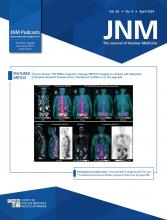Abstract
Radiopharmaceutical therapy is growing rapidly. However, yet to be addressed is the implementation of methods to plan treatments for circulating tumor cells, disseminated tumor cells, and micrometastases. Given the capacity of radiopharmaceuticals to specifically target and kill single cells and multicellular clusters, a quality not available in chemotherapy and external beam radiation therapy, it is important to develop dosimetry and bioeffect modeling tools that can inform radiopharmaceutical design and predict their effect on the microscopic disease. This pamphlet describes a new version of MIRDcell, a software tool that was initially released by the Medical Internal Radiation Dose (MIRD) Committee several years ago. Methods: MIRDcell V3 uses a combination of analytical and Monte Carlo methods to conduct dosimetry and bioeffect modeling for radiolabeled cells within planar colonies and multicellular clusters. Three worked examples are provided to assist users to learn old and new features of MIRDcell, and test its capacity to recapitulate published responses of tumor cell spheroids to radiopharmaceutical treatments. Prominent capabilities of the new version include radially dependent activity distributions, user-imported activity distributions, cold-regions within the cluster, complex bioeffect modeling that accounts for radiation type and subcellular distribution, and a rich table of output data for subsequent analysis. Results: MIRDcell V3 effectively reproduces experimental responses of multicellular spheroids to uniform and nonuniform distributions of therapeutic radiopharmaceuticals. Conclusion: MIRDcell is a versatile software tool that can be used for educational purposes and design of radiopharmaceutical therapies. MIRDcell can be accessed at https://mirdsoft.org or https://mirdcell.njms.rutgers.edu.
- Radiation Therapy Planning
- Radiobiology/Dosimetry
- Radionuclide Therapy
- Radiopharmaceuticals
- cell survival
- dosimetry
- micrometastases
- nonuniform activity distribution
- radionuclide
Footnotes
Immediate Open Access: Creative Commons Attribution 4.0 International License (CC BY) allows users to share and adapt with attribution, excluding materials credited to previous publications. License: https://creativecommons.org/licenses/by/4.0/. Details: https://jnm.snmjournals.org/page/permissions.
- Copyright © 2022 by the Society of Nuclear Medicine and Molecular Imaging, Inc.







